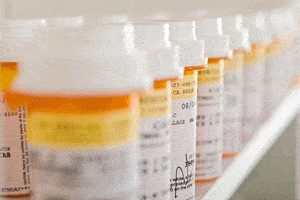
This small fraction of workers’ compensation claims encompasses a majority of costs for payers. In recent years, the industry has done a better job of red-flagging these claimants earlier in the process. But an oft-overlooked tool to help is urine drug testing.
Urine Drug Testing helps physicians whether the patient is compliant with prescribed medications and/or using non-prescriber or illicit drugs.
But UDT has been ignored in many cases or overused in others. Using UDT judiciously can be a tremendous help.
The Stats
Recent research shows fewer than half the injured workers prescribed opioids received UDT – 17 percent to 50 percent. However, it also showed that of the top 5 percent of claims, UDT was conducted in 7 out of 10 physician visits.
Guidelines from the American College of Occupational and Environmental Medicine, the Official Disability Guidelines and the Washington State Interagency vary regarding UDT frequency recommendation. But they all call for UDT at baseline when opioids are initially prescribed, then at various times throughout the year based on the injured worker’s risk stratification. Those at low risk may only need UDT every six months to annually; while high-risk claimants might need to be tested monthly.
The testing provides objective information to support improved clinical decision making, and helps medical providers:
- Monitor and support their decisions about medications.
- Identify recent use of prescription and illicit substances.
- Detect medications that may negatively interact with other drugs.
- Better communicate with their patients about their treatment plan.
- Identify possible medication abuse and misuse.
A recent national sampling of more than 11,000 testing specimens revealed that fewer than half – 47 percent – adhered to their treatment regimens. That means more than half were not taking their medications as prescribed, taking other medications that were not prescribed, or used illicit substances. It is, therefore, incumbent on organizations to include UDT as part of their treatment plans for injured workers prescribed opioids – especially those at higher risk.
Whom to Test
Testing all injured workers might not be feasible or practical. However, there are certain injured workers who should undergo UDT. Identifying those at risk for delayed recovery can involve several steps. One is risk factors for substance abuse disorders, such as:
- History of substance abuse disorder.
- Family history of substance abuse.
- Major psychiatric disorder.
- Cigarette smoking.
- Preadolescent sexual behavior.
- Poor family support.
Injured workers with no history of substance abuse – their own or their families, and no psychiatric history or other risk factors would be considered at low risk for substance abuse disorders. They should undergo UDT when opioids are initially prescribed, then yearly. It should be noted, however, that a person’s risk level can change. Medical providers should be instructed to watch for aberrant behavior or any signs of a problem.
Injured workers with substance abuse histories of non-opioids, and/or factors such as family history of substance abuse or psychiatric histories would be considered at moderate to high risk and should be tested two to four times per year, as well as when they initially prescribed opioids.
Patients Found Abusing
Those who are currently abusing or addicted to substances and/or have psychiatric histories or other factors present would be considered high-risk patients. These patients should no longer receive opioids from their primary physician and be referred for addiction therapy. These injured workers should be tested at least three times a year and possibly as much as monthly, according to the guidelines.
Data from pharmacies can also be helpful in identifying injured workers at higher risk. Pharmacy benefit managers can help identify at-risk claimants based on their patterns of medication use, for example.
Once an injured worker has undergone testing, it’s important to have an expert interpret the results and help determine whether and what type of intervention may be necessary. Expert interpretation is generally provided by the testing lab. An employer may also consider consulting with a medical advisor.
Practical Tips for Employers / Payers Implementing UDT
- Avoid poor quality and abuse by not letting doctors complete their own testing.
- Contract for a panel of tests with a reputable lab.
- Direct testing from physicians to the preferred lab.
Conclusion
There are a variety of tools that can help early identification of injured workers at risk of poor outcomes. UDT can be valuable when it is done with the proper frequency, and when the results are accurately understood and acted upon.

Contact: mstack@reduceyourworkerscomp.com.
Workers’ Comp Roundup Blog: https://blog.reduceyourworkerscomp.com/
©2018 Amaxx LLC. All rights reserved under International Copyright Law.
Do not use this information without independent verification. All state laws vary. You should consult with your insurance broker, attorney, or qualified professional.






